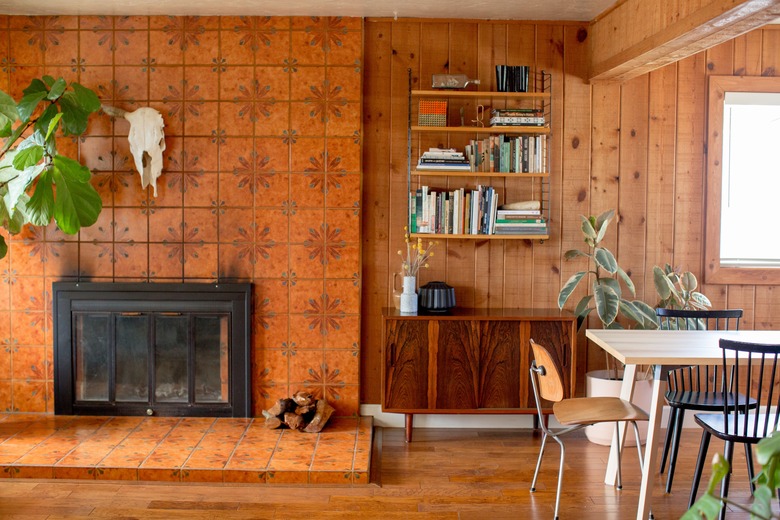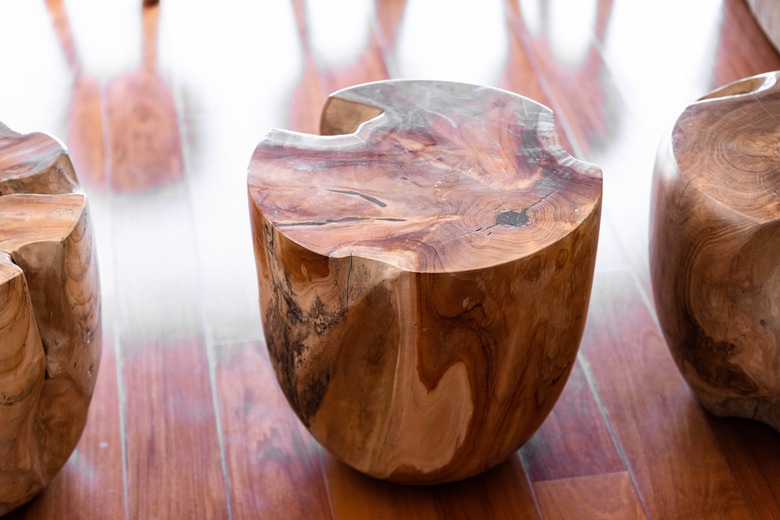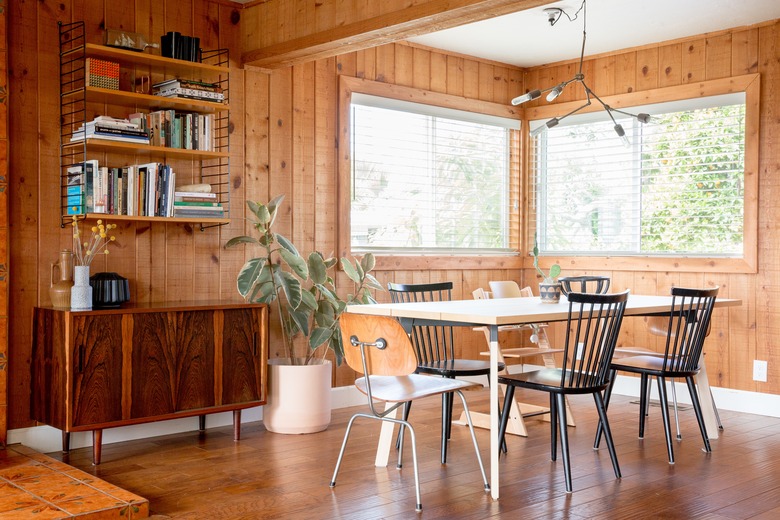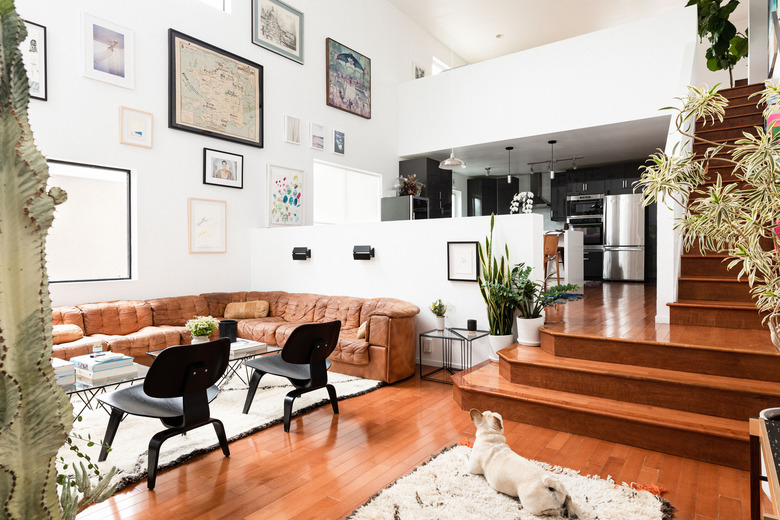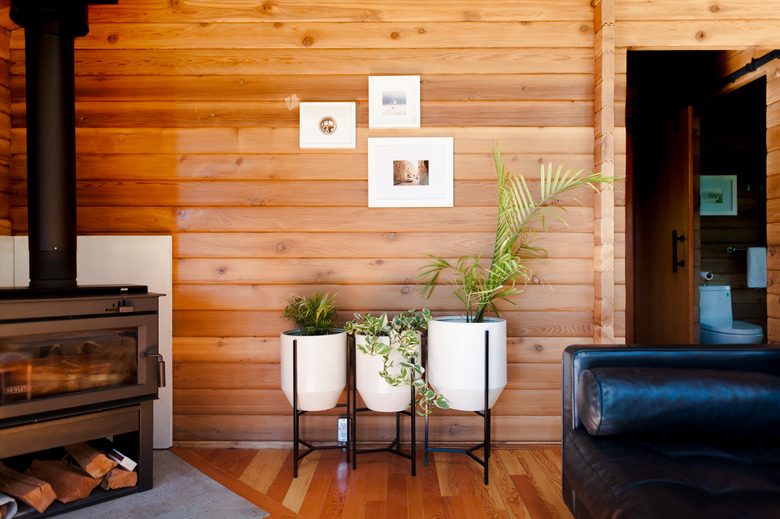Cherry Wood Flooring: A Homeowner's Guide
Cherry hardwood flooring is a beautiful choice for the living room, the bedroom and in many cases, most of the house. Its reddish hue adds visual warmth that looks even better as it ages. Cherry wood flooring lasts for generations, is relatively easy to care for and is much better than carpeting for those with allergies or pets. Brazilian cherry is an even better option, as it's considerably harder than American cherry.
Solid vs. Engineered Cherry Flooring
While cherry hardwood flooring looks similar whether it's made of solid wood planks or engineered wood, they're not entirely the same. As the name implies, every solid cherry floor plank is one piece of wood cut from a cherry tree. Engineered wood is plywood with a thin layer of cherry veneer on top. The durability of the cherry on an engineered plank depends on the thickness of the veneer.
An engineered plank is less prone to warping from humidity changes, making it a better choice for basements and bathrooms, but it may not last as long as solid cherry. Solid cherry flooring can be refinished many times, while an engineered cherry floor can only be refinished once or twice before sanding through the cherry veneer.
As far as finish options are concerned, solid cherry wood planks may be either raw wood or prefinished, while engineered cherry planks are usually sold with the finish already in place. Cherry hardwood usually isn't stained since this wood has a desirable color on its own compared to a light wood such as pine, which is often stained to mimic the color of a darker wood species.
Jatoba: Harder Than American Cherry
Brazilian cherry hardwood, also known as jatoba, is quite a bit different than American cherry wood. It's harder than most other types of wood flooring, with a Janka hardness rating of 2,350. Jatoba's grain is less wavy than American cherry, according to Floor Coverings International. Jatoba also has more color variation than American cherry, with sapwood a light-grayish hue and the heartwood darker, ranging from a light pink to a reddish brown. The heartwood also darkens over time, resulting in warm, rich, darker streaks that look beautiful on planks of hardwood flooring.
American cherry, by comparison, ranks at 950 on the Janka scale — meaning it dents and scratches more easily — and has light-brown sapwood and darker-brown to reddish-brown heartwood. Both parts of the wood also have a pinkish hue that darkens to a reddish tone within a year or so.
American and Brazilian cherry have similar prices. American cherry averages $3 to $8 per square foot, while Brazilian cherry averages $5 to $8 per square foot for the wood itself. Expect to pay another $2 or so per square foot for professional installation. If you are unsure of which type of cherry to buy, look at finished samples of each. Even considering cost factors, in general, it's best to buy the hardest wood you can afford since harder wood is less susceptible to dents and deep scratches.
Plank Width and Length
Much like floor tiles, wood floor planks come in a variety of widths to suit your aesthetic tastes. Many homes with older wood floors feature planks that are 2 1/4-inches wide, sometimes narrower. A slightly wider plank is a common "narrow" option now, at 3 1/4-inches wide. Other common widths include 4-, 5- and 6-inch-wide planks, according to Hosking Hardwood. The narrower the planks, the more the boards stay tightly close together when indoor humidity is minimal, such as in the middle of winter.
Some manufacturers specializing in wide planks offer even wider sizes, although this is most common with pine flooring, which is considerably softer than cherry. These planks are really boards, sometimes up to 12 inches wide or even wider for custom projects. Many retailers sell random widths of wood floor planks as well, with the widest planks averaging 1 to 3 inches wider than the narrowest.
The length also varies, with 7 feet as a common offering for a fairly narrow board. For wide planks, a longer board looks a bit better. With either narrow or wide boards, if the planks are too short, the floor looks like it was pieced together in a patchwork fashion. If you are unsure of which look is best for your room, ask the flooring retailer or installer to show pictures of rooms with different plank widths.
Cherry Floor Construction and Installation
Most solid wood floor planks have tongue and groove construction, with a protrusion on one side and a groove that fits around it on the other. This allows the planks to snap together, which helps prevent warping and huge gaps when the wood contracts in overly dry conditions. Even though the boards interlock to some degree, they still must be nailed to the subfloor unlike an engineered floating floor.
While some DIYers choose to install their own hardwood flooring, many leave this to a professional, as improper installation could lead to squeaky floors and warpage issues. If you're planning to install your cherry hardwood flooring yourself, purchase at least 10 percent more flooring than needed to accommodate for mistakes.
A solid hardwood floor must be installed over a plywood subfloor or over an existing wood floor. It can't be installed over tile or directly atop concrete. The subfloor should also be free of squeaks before installation, otherwise the hardwood floor will squeak too.
Installing a wood floor yourself requires a lot of planning and should not be attempted until you're completely certain of the process. The first planks, laid near the longest wall, must be laid perpendicular to the joists. You may need to visit the basement or crawlspace to determine the alignment of the joists. A pneumatic nail gun is the best choice for nailing down planks, as it will save tons of time.
Other Cherry Floor Considerations
Even though solid cherry is a great option for most rooms, it's not ideal everywhere. Hardwood floors should not be installed in basements or below grade, where moisture could be an issue. An engineered cherry floor could work well in a basement, however. The same holds true for full bathrooms, as engineered wood holds up better than solid wood in such a situation, with less likelihood to warp, expand and contract.
When planning a wood flooring purchase, prefinished boards are a great choice for several reasons: no extra finishing expenses, no drying and curing time and no noxious odors. Prefinished boards also tend to have a more durable finish than finishes applied on-site.
Once the floor is installed, keep it tidy by sweeping or dusting every day or two. You may want to take off shoes worn outdoors to prevent tracking mud, dirt and gravel indoors to help keep the floor in pristine condition. Avoid using harsh cleaners such as bleach on any type of hardwood floor.
